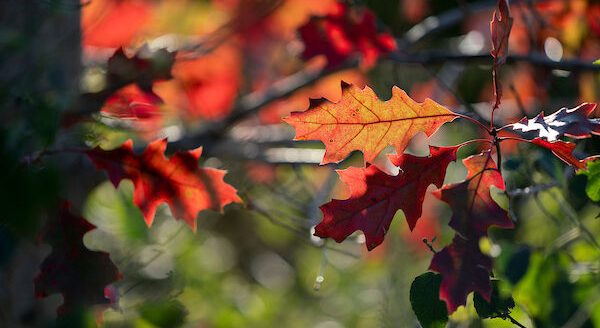Your winter gardening
By Charles Lillard
Oklahoma State University Extension
Winter is not the most exciting time for gardeners. Except for evergreens, the color has gone and the cold air keeps us inside. On a warm winter day, we may sit on the back porch and enjoy the sunshine. However, on most winter days gardeners are enjoying the outside from inside. Perhaps you want to add winter interest to your landscape. Now is a good time to plan for that to happen. Look at your own yard to see what you might want more of, and look other places to see what you might add.
There are many plants that provide beauty in winter. As I look out my window in the early light of morning, I find beauty in the silhouette of tree limbs. Trees provide interest in winter. Trees give us beauty not only in their shape but also in the variety of bark. Notice the variation on birch, willow, oak, maple and, especially, Lace Bark Elm.
Perhaps the most striking plants in winter are the ornamental grasses. Their blooms sway in the wind. Look around your neighborhood and see what grasses grab your attention. Ornamental grasses are a year round addition to the landscape. One of the best and easiest to find is Maiden Grass (Miscanthus sinenssis). They produce eye catching seed heads sometimes referred to as flowers. Notice them now and plant them in the spring. There are many varieties to choose from. Maiden Grasses range in height from 3 to 6 feet. They have few pests. Most varieties need a minimum of 6-8 hours of sun each day. Another popular grass in Oklahoma is Pampas Grass (Cortaderia sellnama). It is considered invasive in some states but not Oklahoma. This grass is highly adaptable. Some varieties can grow to 13 feet tall. Other grasses to consider are: Blue Fescue (Festuca glauca), Switchgrass (Panicum virgatum), and Fountain Grass (Pennisetum alopecuroides). These grasses and others can be seen in the Ornamental Grass Display at the OSU Botanical Garden in Stillwater.
Besides trees and grasses, many shrubs add interest to the winter landscape. Aucuba or Gold Dust plant is excellent in shaded areas and for the most part stays green year round. You might have some winter burn but Aucuba survives very well. The exculpating bark of Crape Myrtle and Oakleaf Hydrangea make for winter interest as well. Harry Lauder’s Walkingstick shows off its intricate limb pattern in winter time. The fact sheet, “Selecting Shrubs for the Landscape” HLA-6439, is available at your Cooperative Extension Center or on line at osufacts.okstate.edu. When most trees and shrubs have lost their leaves some, like Yaupon Holly (Ilex vomitoria Aiton), begin producing numerous red berries. Yaupon is classified as an evergreen shrub but this shrub can reach heights of 30 feet. They can be a tree, hedge, or shrub. They also tolerate shade. The Oakleaf Hydrangea (Hydrangea quercifolia) tends to hang on to their leaves and dead flowers but they reveal enough of their bark to catch your attention.
These plants along with evergreens such as boxwoods, junipers, and yews, make our winter landscapes something to behold. You may want to stay in by the fire, so plant them where they can be viewed from the inside. This spring, think about making your landscape a winter wonderland.
